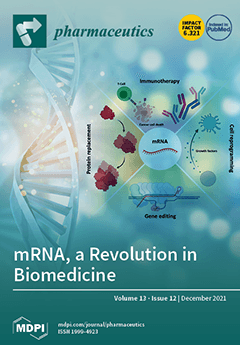A combination of the tyrosine kinase inhibitor—sorafenib—and the opioid analgesic—morphine—can be found in the treatment of cancer patients. Since both are substrates of P-glycoprotein (P-gp), and sorafenib is also an inhibitor of P-gp, their co-administration may affect their pharmacokinetics, and thus the safety
[...] Read more.
A combination of the tyrosine kinase inhibitor—sorafenib—and the opioid analgesic—morphine—can be found in the treatment of cancer patients. Since both are substrates of P-glycoprotein (P-gp), and sorafenib is also an inhibitor of P-gp, their co-administration may affect their pharmacokinetics, and thus the safety and efficacy of cancer therapy. Therefore, the aim of this study was to evaluate the potential pharmacokinetic drug–drug interactions between sorafenib and morphine using an animal model. The rats were divided into three groups that Received: sorafenib and morphine (I
SOR+MF), sorafenib (II
SOR), and morphine (III
MF). Morphine caused a significant increase in maximum plasma concentrations (C
max) and the area under the plasma concentration–time curves (AUC
0–t, and AUC
0–∞) of sorafenib by 108.3 (
p = 0.003), 55.9 (
p = 0.0115), and 62.7% (
p = 0.0115), respectively. Also, the C
max and AUC
0–t of its active metabolite—sorafenib N-oxide—was significantly increased in the presence of morphine (
p = 0.0022 and
p = 0.0268, respectively). Sorafenib, in turn, caused a significant increase in the C
max of morphine (by 0.5-fold,
p = 0.0018). Moreover, in the presence of sorafenib the C
max, AUC
0–t, and AUC
0–∞ of the morphine metabolite M3G increased by 112.62 (
p < 0.0001), 46.82 (
p = 0.0124), and 46.78% (
p = 0.0121), respectively. Observed changes in sorafenib and morphine may be of clinical significance. The increased exposure to both drugs may improve the response to therapy in cancer patients, but on the other hand, increase the risk of adverse effects.
Full article






